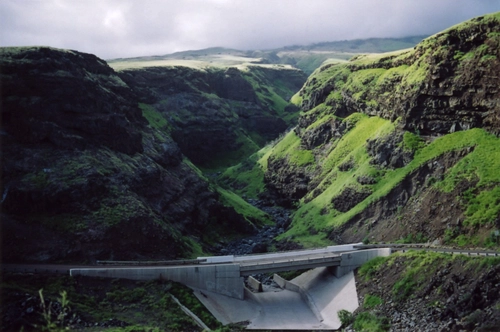Transforming Wastewater into a Lush Green Belt on Maui
Transforming Wastewater into a Lush Green Belt on Maui
In a revolutionary step towards sustainable development, a new project on Maui is transforming wastewater into a thriving green belt, proving that what we often discard can indeed be treasure. This groundbreaking initiative is not only converting waste into a valuable resource but also ensuring the preservation of the environment and promoting biodiversity on the island.
The Vision Behind the Project
The vision for this trailblazing project was born out of a necessity to address the dual challenge of wastewater management and environmental degradation. By reimagining wastewater as a resource rather than waste, the project aims to:
- Mitigate water scarcity on the island.
- Enhance the natural landscape of Maui.
- Promote ecological balance and biodiversity.
Underpinning this vision is the recognition that traditional wastewater disposal methods are neither sustainable nor beneficial to the environment. By adopting a forward-thinking approach, this initiative is breaking new ground in ecological conservation.
How the Process Works
At the heart of this project is an advanced wastewater treatment system that purifies and repurposes water for irrigation and other uses. The process involves several stages:
Primary Treatment
The initial stage involves the removal of large particles and debris from the wastewater. This is achieved through screening and sedimentation, ensuring that only the finer pollutants progress to the next stage.
Secondary Treatment
In this phase, biological processes come into play. Microorganisms are introduced to break down organic matter, resulting in cleaner water. This stage is crucial in minimizing harmful contaminants.
Tertiary Treatment
The final purification stage involves advanced filtration and disinfection techniques. This ensures that the water is safe for reuse in agriculture and landscaping, turning an otherwise discarded resource into a lifeline for the greenery of Maui.
Environmental and Economic Benefits
The transformative impact of this project extends beyond environmental conservation. By repurposing wastewater, Maui is reaping significant economic and ecological benefits:
- Cost Savings: Reduced dependency on freshwater sources translates into substantial cost savings for agricultural and horticultural activities.
- Enhanced Biodiversity: The development of a green belt supports a wide range of flora and fauna, fostering a balanced ecosystem.
- Improved Soil Health: Use of treated water for irrigation enriches the soil, promoting healthier plant growth.
- Lower Carbon Footprint: Eco-friendly practices contribute to reducing greenhouse gas emissions, aligning with global sustainability goals.
Community Involvement and Awareness
The success of this initiative hinges significantly on community participation and awareness. Engaging local residents and stakeholders has been a priority:
- Educational Workshops: Informative sessions on wastewater management and its benefits are regularly conducted to raise awareness.
- Community Gardens: Local communities are encouraged to participate in the cultivation and maintenance of green spaces.
- Public Forums: These create a platform for dialogue, innovation and feedback, ensuring that the project remains inclusive and adaptable.
Through active involvement, the community is not just a beneficiary but a key contributor to the project’s success, ensuring a collective effort in fostering sustainability.
Challenges and Future Prospects
While the project has garnered significant success, it has not been without its challenges. Overcoming technical, financial, and logistical hurdles is part of the journey towards innovative solutions:
- Technology Implementation: Integrating advanced technologies in traditional systems requires substantial investment and expertise.
- Funding: Securing continuous funding is essential to sustain and expand the project.
- Infrastructure Development: Building an efficient and resilient infrastructure is crucial for the long-term success of the initiative.
However, the prospects for the future are promising. The project’s scalability means that similar models can be replicated in other regions facing water scarcity and environmental challenges. Additionally, ongoing research and development will likely yield even more efficient and eco-friendly wastewater treatment technologies.
Conclusion
The groundbreaking project on Maui is a testament to the power of innovative thinking in transforming waste into wealth. By converting wastewater into a lush green belt, it not only addresses critical environmental issues but also sets a precedent for sustainable development. As other regions observe and learn from Maui’s success, the global pursuit of ecological balance and resource conservation gains renewed momentum.
If there’s one key takeaway from this initiative, it’s that sustainability and resourcefulness can go hand in hand to create thriving ecosystems even from the most unlikely sources.







